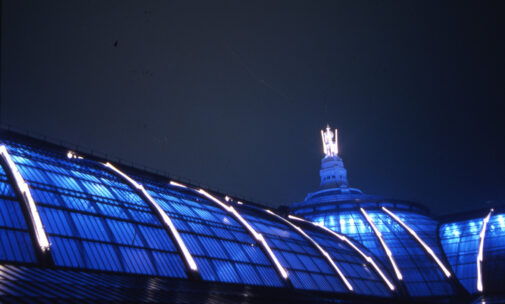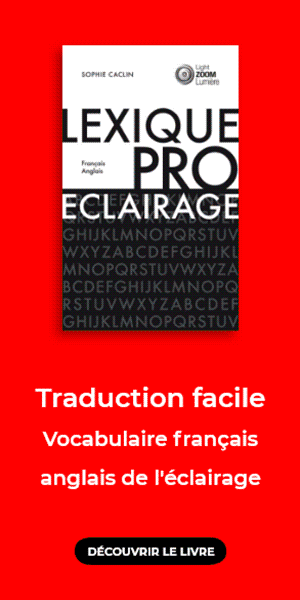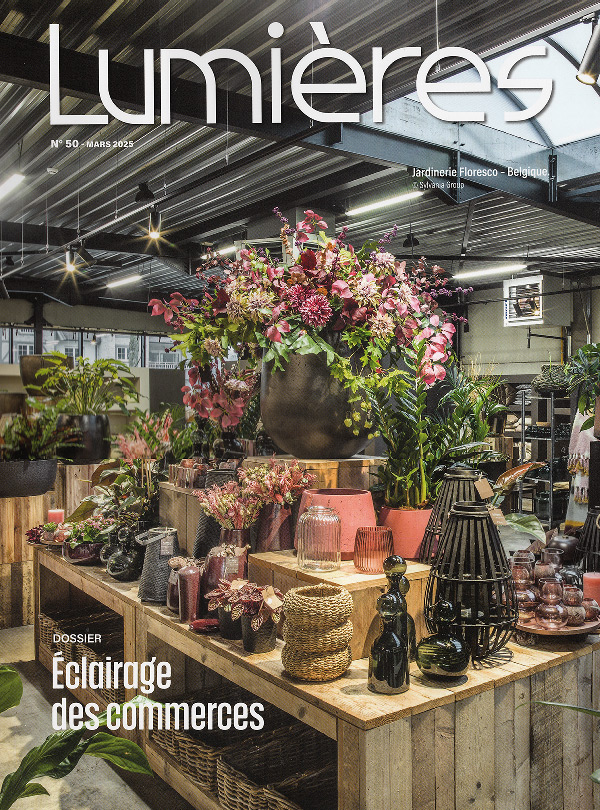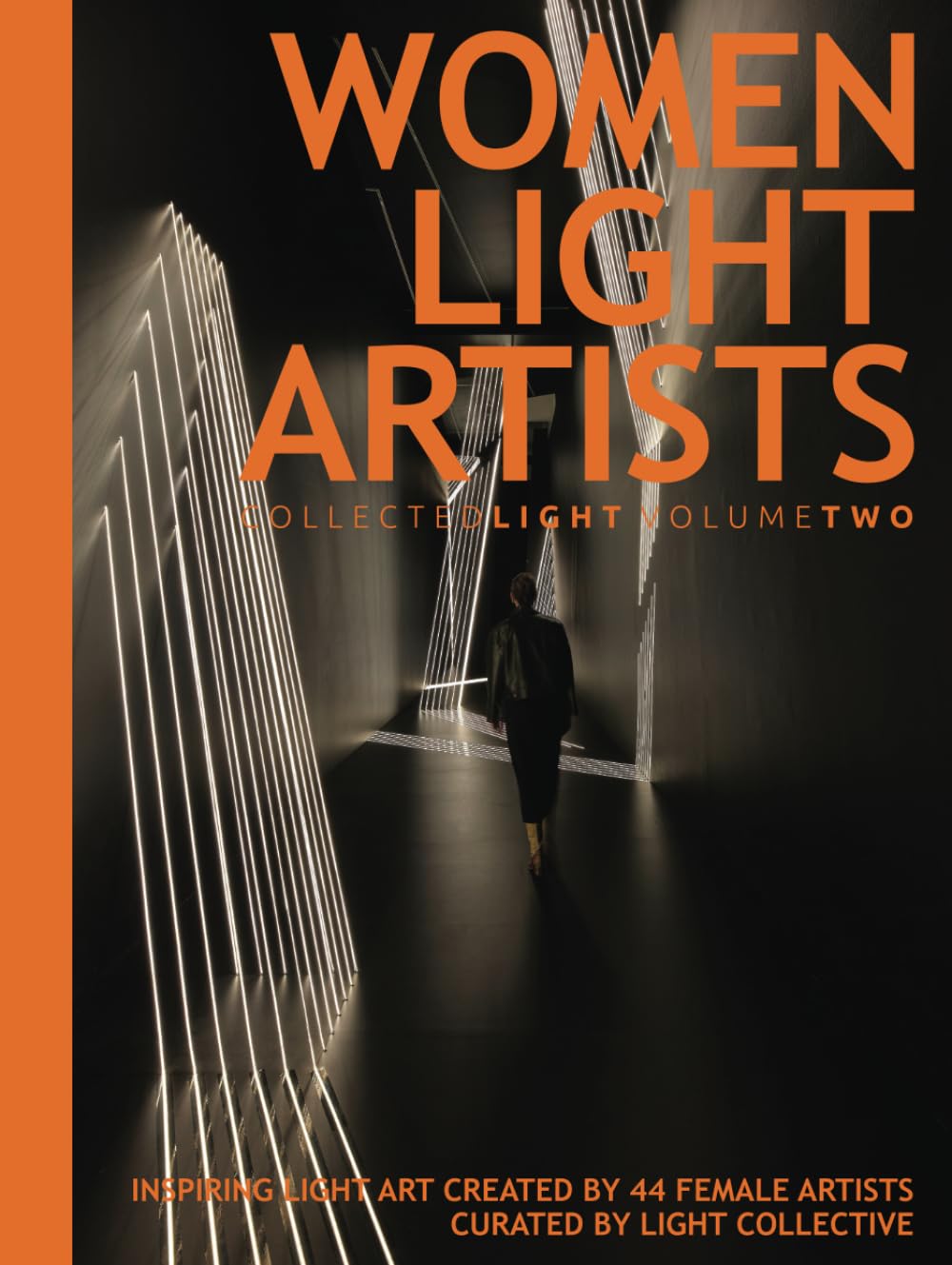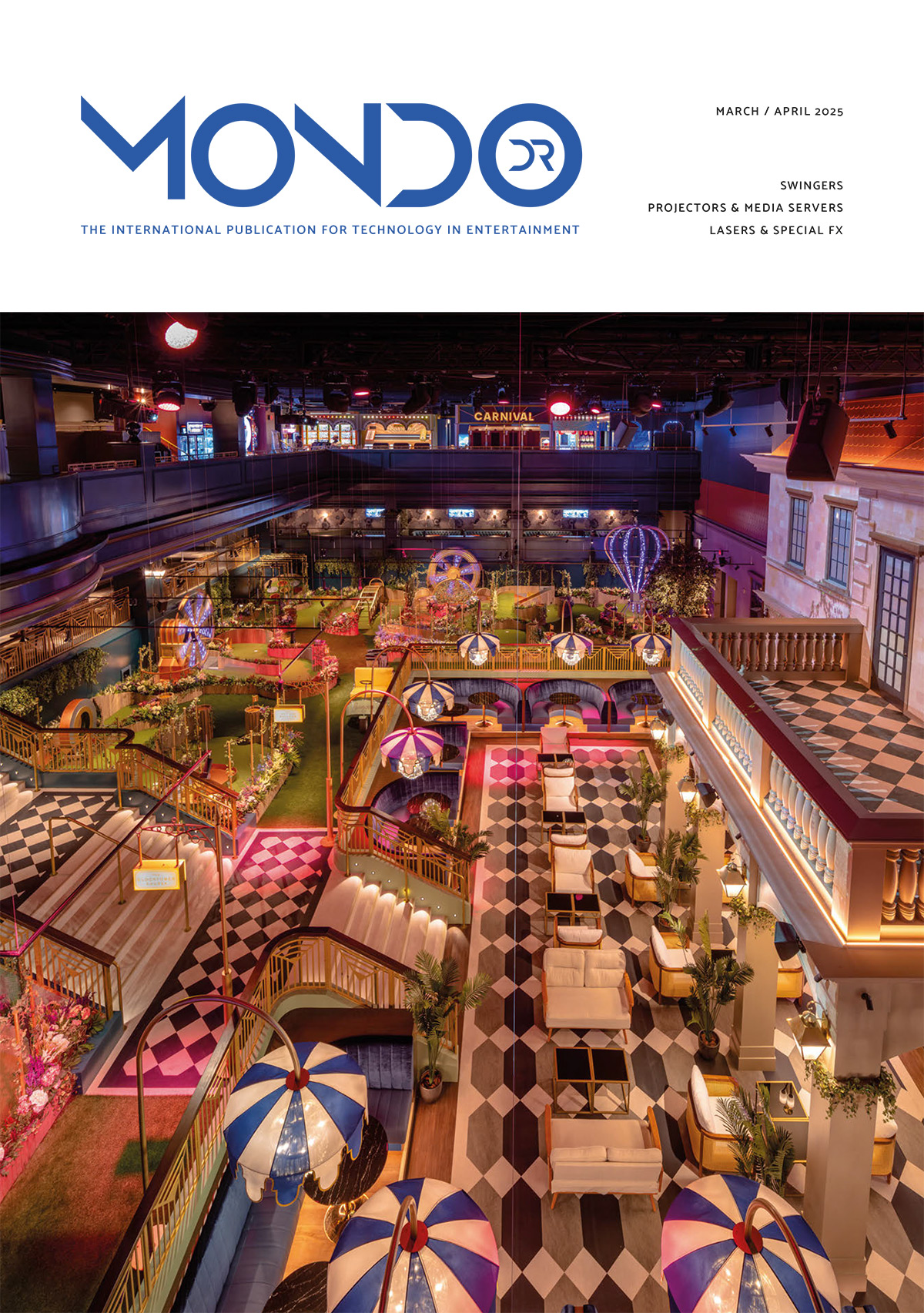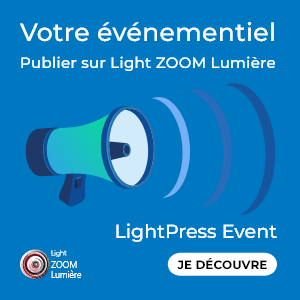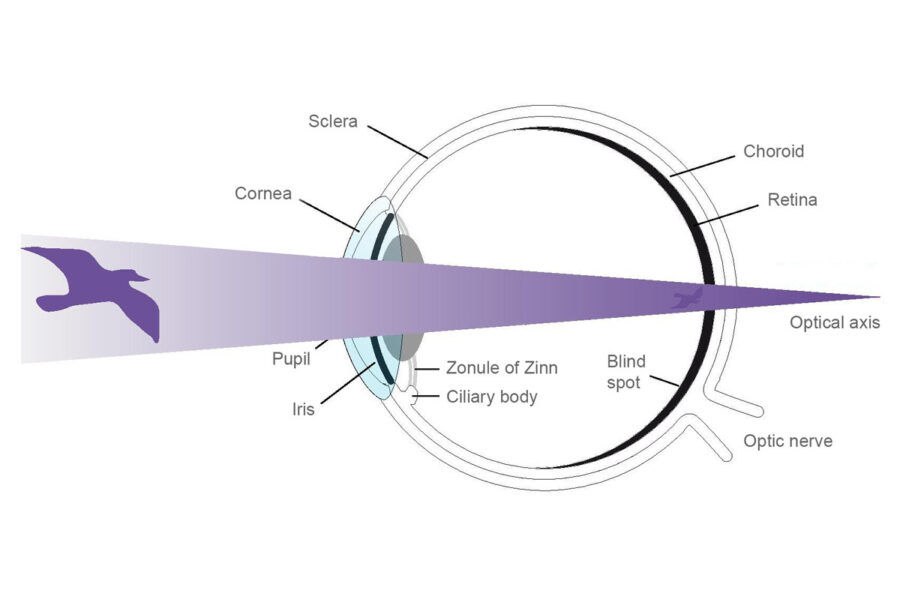
Do LED lights cause retinal damage? Separating fact from fiction
In this article, we delve into a topic that comes up every so often: the effects of LED lights on the retina. We won’t deal with circadian effects, which were covered in a previous article. Note that the opinion presented in the article is mine alone.
ANSES report
First things first: a little background. An October 2010 report by the French Agency for Food Environmental and Occupational Health & Safety (ANSES) on the health effects of lighting systems using light-emitting diodes (LED) highlighted a “potential” risk from LED light. The report is worth a close read.
I have a deep respect for ANSES, which occupies a watchdog role and an independent position that is rarely found in today’s world. After having dealt with several similar public agencies abroad, I’ve found ANSES to be both useful and valuable. My criticism applies mainly to the overly dramatic message that comes across in the report and the rebound effect it has had in articles and blogs by journalists who did not actually read the report.
My sole reproach of ANSES would be that it validated the report’s executive summary, which in my opinion does not sum up the report and actually fuels the drama. The content is relatively abstruse for non-experts, and the summary is much more negative than the report’s overall content.
As for content, the report mentions the following:
“The company OSYRIS [Editor’s note: specialized in medical and industrial lasers] voiced concerns in a letter […] about possible impacts of LEDs on the retina. In this letter, the company highlighted the possible link between exposing the eye to short-wavelength light, which is similar to ultraviolet light (characteristic of the LED light spectrum) and the risk of inducing a medical condition of the eye called macular generation.”
This results of this study, only sections of which were quoted and spread through the media, became “LEDs are dangerous” in the national headlines. In fact, the study was suggesting a way to measure the risk. Assessments of LEDs are in fact rather positive. The report also highlighted the Standard NF EN 62471, which establishes a standardized method of measurement.
Description of the risk
There are two types of risks associated with light of any kind: brightness and Spectrum.
According to the above mentioned report, risk is caused by “spectral imbalance of LEDs (significant proportion of blue light in white LEDs); [and] high levels of radiance (high brightness density per surface unit emitted by these very small light sources).” Let’s take a closer look at luminance.
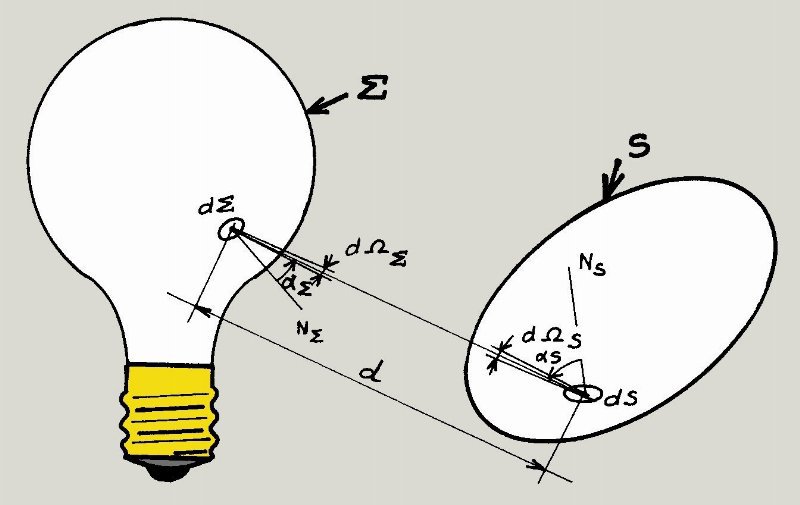
Risk analysis: luminance
Luminance is a risk measured using an exotic-sounding unit called the Troland (Td), or “conventional retinal illuminance”. It can be easily calculated as T=L*A, where:
- L is the source luminance in cd/m2
- A is the pupil diameter, approximately 10 mm2 (square millimeters).
A value over 10,000 cd/m2, or, 100,000 Td, is considered to be disturbing. We will go on to discuss luminance, or flux/source size, given that we will be comparing relative values (all proportional to Troland).
Luminaire and luminance
Now, in terms of lighting applications, let’s consider what a light is: a light source plus optics, some mechanics and a bit of electronics.
An LED without secondary optics (a lens) can emit a significant amount of light. For example, a 1000 lm source (say, from a headlight), can produce a million candela.
In terms of products, to my knowledge the only close-range lights where LEDs are visible are strip lights and flashlights.
- Strip lights: These tend to use mid-power PLCC LEDs, which have a low luminance.
- Flashlights: The risk associated with these products is similar to that of looking straight into the sun, where visual disturbance is experienced immediately.
In terms of figures, we can make a simple comparison. To achieve collimated light, imagine a lamp with optimized optics that is visible from a given distance (the same for all technologies – let’s assume 10 cm). We can avoid a few calculations by simply taking the light density of each light source and considering the “optimal optics”. The value obtained provides a figure of merit that reflects the “dangerousness” and has the advantage of being easily to calculate (and proportional to the cd/m2 and Troland values).
Light sources and luminance
This allows us to compare the risks of various light sources (for radiance) by their brightness and size. Let’s define a simple figure of merit for brightness: brightness to surface area.
- The LED itself, with a 2 mm2 chip, at 700 mA, and a silicone dome that doubles the visible surface, emits around 300 lm (100 lm/W) over a visible surface of 4 mm2. This gives us a brightness with an arbitrary unit, for comparison purposes (figure of merit = 75).
- A high-power LED without a dome, which is uncommon (figure of merit = 150).
- A mid-power LED will be around 50 lm with an emitting surface of 10 mm2 (figure of merit = 5).
If we using this calculation for other light sources, we get the following:
- The sun: 6.84*10-5 steradians at noon, or the equivalent of a source measuring 68 mm² at 1 m, based on our quick calculations, with a figure of merit of around 1000 (clearly very dangerous).
- High-intensity discharge (HID) lamp: Let’s take a lamp such as this one for comparison. For this example, let’s assume it has a filament measuring 5 mm2 and luminance of 4000 lm, which gives us a figure of merit of 800.
- Halogen: 3 mm² and 1000 lm gives us a figure of merit of 300.
- Incandescent: 10 mm² (a so-called modern filament without loops and a transparent bulb) and 600 lm (for a 60 W bulb) gives us a figure of merit of 60.

Based on these values, we can rate the risks as follows by decreasing luminance:
- The sun
- HID lamps
- Halogen lamps
- Incandescent bulbs and LED lights without optics
- LEDs with optics
Note that in terms of luminance, fluorescent tubes fare even better (ranked last) than LEDs and panel-type OLEDs.
This means that the luminance risk appears to be somewhat exaggerated with regards to news coverage (as was the case following the report in 2010). In short, I recommend not looking directly at a light source if within 10 cm of it, regardless of the lighting technology!
Risk analysis: spectrum
Analyzing this risk is more nuanced. The spectral eye sensitivity curve, the “Y” variable in colorimetry, is a curve centered on 555 nm.
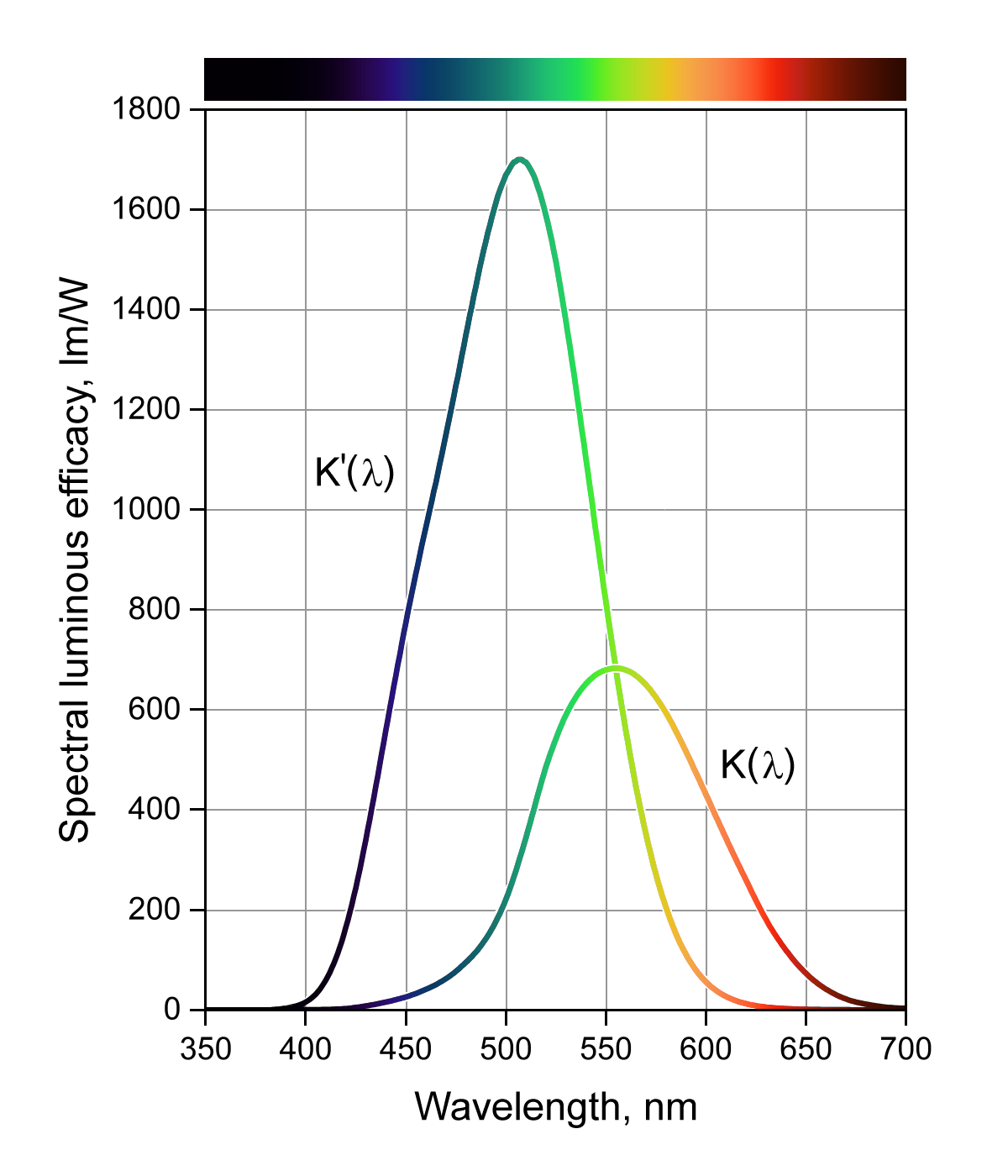
This curve indicates eye sensitivity based on wavelength. For evolutionary reasons, our eyes are more sensitive to green (555 nm) and less sensitive to blue.
White LED light is mainly an LED emitting blue light, which our eyes see as white. Generally speaking, the blue peak is found at 450 nm.
We can clearly see that eye sensitivity is low at this value, which leads to a risk of the pupil not adapting its diameter and therefore retinal risk if the blue flux is too strong compared to the rest of the spectrum (the eye thinks it isn’t seeing anything).
However, the ANSES report is clear on this point: this risk emerges with cool white LEDs and is non-existent for warm white and neutral LEDs.
Colorimetry and spectrum
The reason is essentially due to colorimetry, because it is difficult to make cool white without blue.
The degree of risk rises if we use high-intensity light in royal blue. But because the eye registers virtually nothing, this would be a rather useless lighting device. However, the real risk is underlined in the ANSES report and relates to toys. High-power royal blue LEDs should stay out of children’s hands!
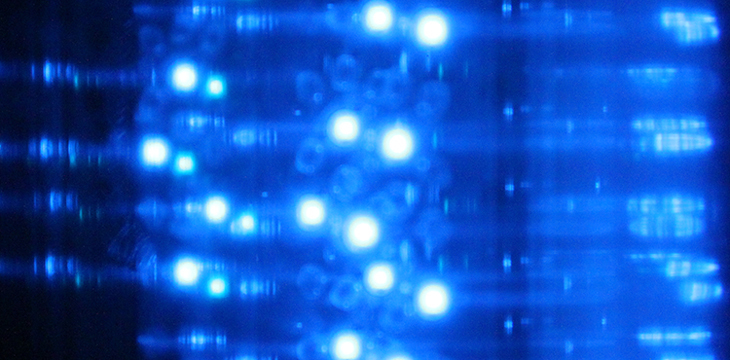
To analyze the risk of cool white LEDs, let’s compare them with other lighting technologies. Take compact fluorescent lamps (CFL), for example. What can we see across this spectrum? A peak of green, red and blue, at 430 nm. This spectrum is similar to the spectrum for a red-green-blue (RGB) LED source.
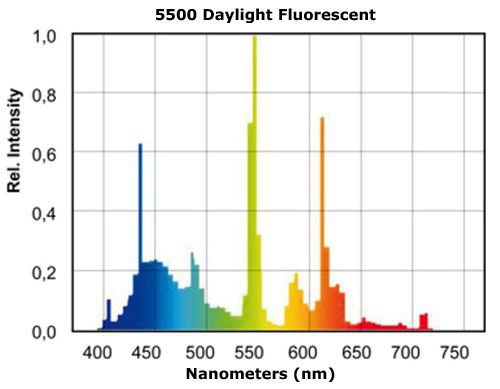
If we look at an HID source (e.g., a xenon lamp), it also shows a blue peak.
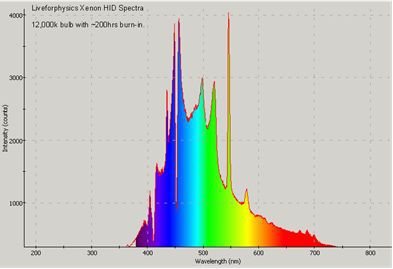
Now, if we consider the sun at noon, at sea level, we also get a cool white in the spectrum. Looking at the blue (450–460 nm), there is a peak (and the irradiance is alarmingly high, at 1.5 W/m²/nm)!

So the risk implied in the statement “LED light is dangerous” actually reflects a colorimetric risk. Avoid very cool white light because it requires the use of blue light.
In sum, the ANSES report marked a genuine step forward by pointing out a potential risk and provided a test to measure that risk. The harmful effect is real and has been clearly demonstrated.
However, the use of the summary from the first few pages as incriminating evidence and the skimming of the report by journalists as a ploy for media attention has had disastrous consequences for the French lighting industry, and mainly small companies.
In ten years of LED product development, I’ve never seen risks higher than 0 and 1, and that includes cool white stadium lighting at 200,000 lm. In any case, visual disturbance (overly bright light) occurs well before any real damage.
That said, not everyone knows this and people are still worried, and in certain cases dealing with the issue requires more customer support than many small companies can provide.
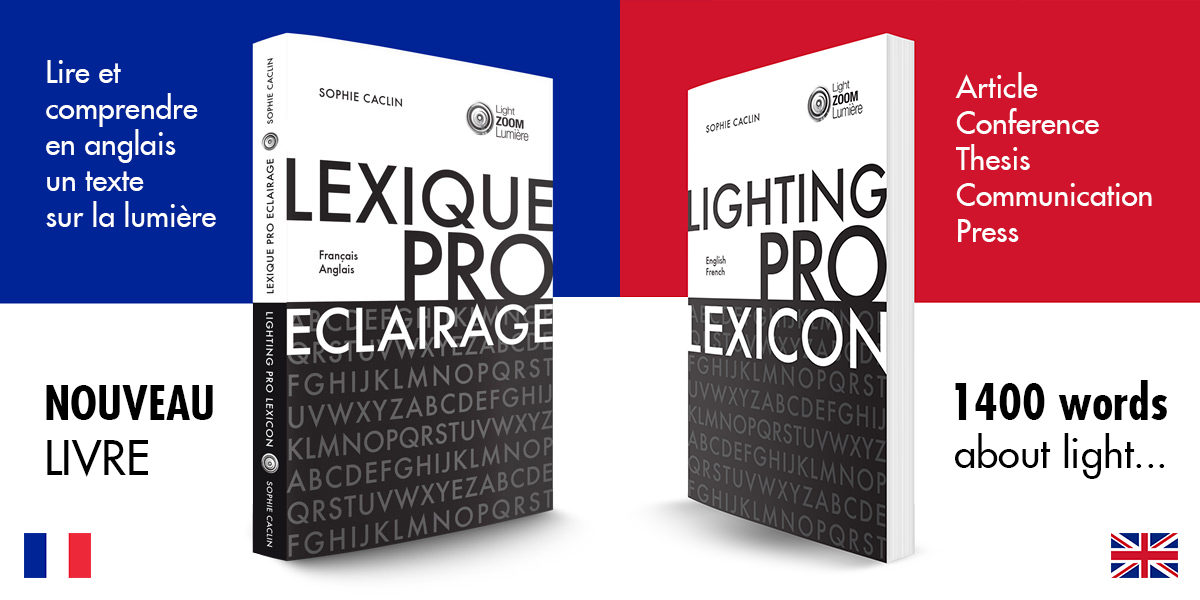
Conclusion
If you are a lighting manufacturer, systematically test all your products against the Standard NF EN 62471. It’s a quick and cheap test available from a good laboratory and takes no more than a day per product type.
If you use LED products:
- Warm white or neutral light pose no problems.
- Low flux cool light is fine. If the light emits high flux, keep it at a distance!
- Avoid using strong lighting such as stadium lights indoors, or ensure they comply with the Standard NF EN 62471.
- Most importantly, never look directly at the sun.
- Do not use only royal blue lighting to light your home (besides, it’s pointless – you won’t see anything).
- Be sure to stay at least 10 cm away from your xenon car headlights.
Translate in English by Teri Jones-Villeneuve.




